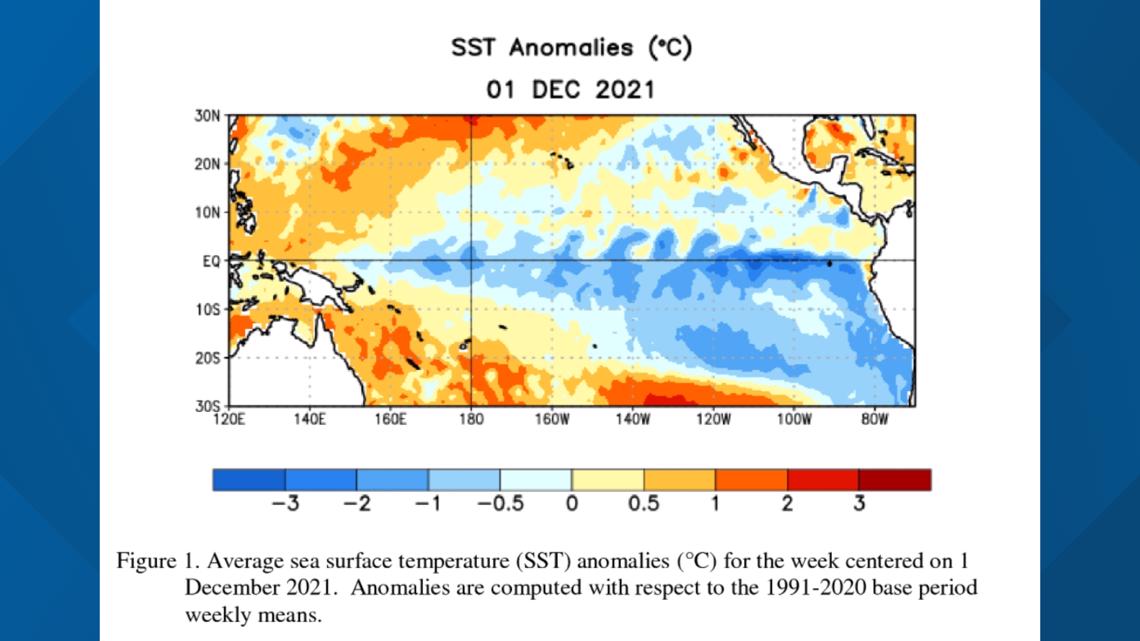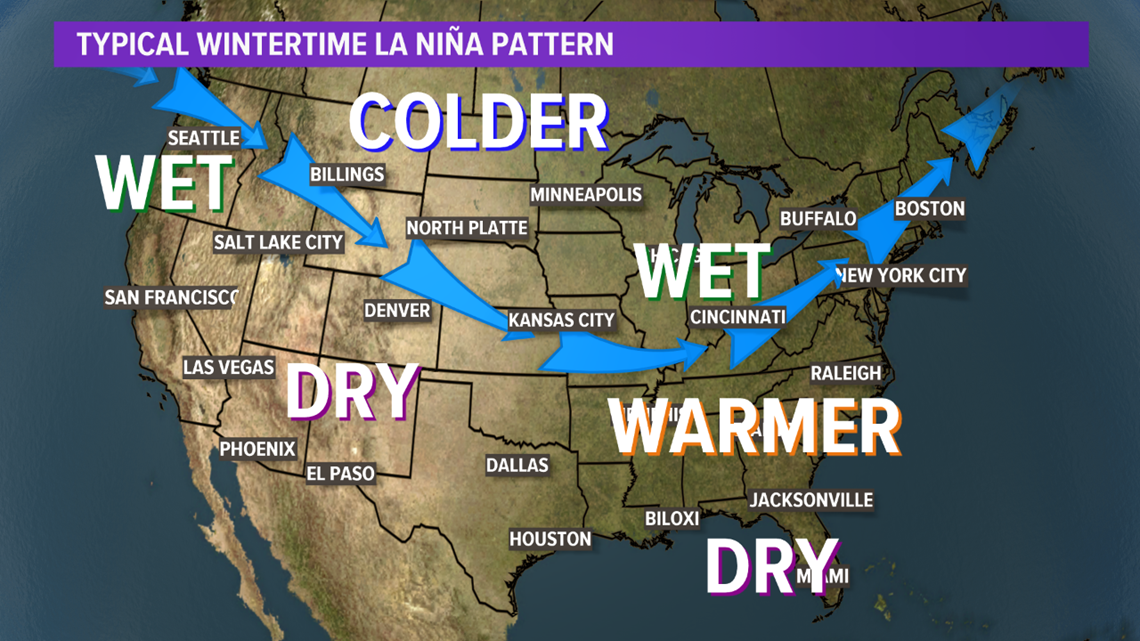BUFFALO, N.Y. — It's no secret by now that a La Niña has developed and will be present this winter. But new projections show potential impacts, or lack there of, for next spring as well.
In a recent update to the La Niña Advisory from the Climate Prediction Center, new projections show that the current La Niña could fizzle out by spring. Specifically, there is a 95 percent chance the current La Niña lasts all winter long, but 60 percent chance it weakens and transitions back to ENSO-neutral conditions by April.
And while the current La Niña is expected to be slightly stronger than lasts year's, with these projections, it will be shorter too. The La Niña from 2020-2021 lasted from September of 2020 through May 2021. This one was officially documented and observed in October and could only last through April of 2022.
This update to the La Niña Advisory comes about a month after the announcement that the current La Niña had developed in the Equatorial Pacific Ocean.


Regardless, the main point here is that the current La Niña will continue this winter and possibly strengthen from a weak to moderate La Niña event. And thus, the initial wintertime outlook holds. Specifically for Western New York and much of the Northeast, the Storm Team 2 and Climate Prediction Center is anticipating potentially warmer-than-average temperatures and above-average precipitation with a this La Niña pattern in place.
That being said, this is all based on the correlating jet stream pattern over the United States when a La Niña is present during the winter. In a La Niña wintertime pattern, the polar jet stream tends to dip farther south across the continental United States. The results of this jet stream pattern varies by location. Even so, it's never a guarantee for Buffalo's winter as the lakes have a heavy influence locally too.


This will be the second winter in a row with a La Niña as last year's moderate La Niña developed a little earlier in the fall and lasted all through spring too. Now there's not much to read into with having two La Niñas present for two winters in a row. Second La Niña years can vary as much as having no La Niña or even an El Niño.
El Niño Southern Oscillation (ENSO) is a large, naturally occurring ocean to atmosphere phenomenon located over the equatorial Pacific Ocean. It's positive phase is an El Niño and negative phase is a La Niña. And it's closely monitored year round as it can influence weather patterns across the Northern Hemisphere, especially during the fall, winter and even spring months.


